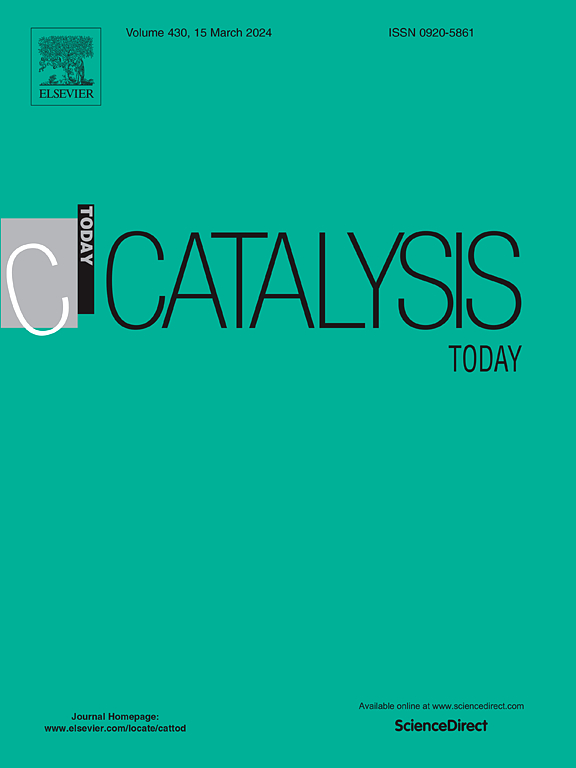Soft-hard templating solution combustion synthesized CeO2-CuO-TiO2 nanostructures for visible light photocatalysis
IF 5.2
2区 化学
Q1 CHEMISTRY, APPLIED
引用次数: 0
Abstract
Given the growing need to address emerging contaminants in water systems, particularly pharmaceutical compounds, there is a pressing demand for advanced and eco-friendly technologies capable of effectively degrading these pollutants. Heterogeneous photocatalysts, especially those based on TiO2, have shown considerable promise in water purification efforts. However, TiO2’s efficiency is primarily confined to the ultraviolet region (< 380 nm) due to its large band gap energy (3.2 eV) in the anatase phase. To overcome this limitation and extend the use of TiO2-based photocatalysts to the visible light spectrum, combining titania with other oxides that are sensitive to visible light has proven to be a successful strategy. Ceria (CeO2), with its Ce3 +/Ce4+ redox pair, enhances photocatalytic activity, while CuO is recognized for its ability to promote visible light responsiveness in TiO2 catalysts. This study explores a one-pot soft-hard templating Solution Combustion Synthesis (SCS) approach to prepare a series of CeO2-CuO-TiO2 nanostructures with different compositions, as effective heterogeneous photocatalysts for visible light-assisted degradation of organic contaminants. The performance of these photocatalysts was investigated both under UV and visible light irradiation, for methylene blue and nalidixic acid degradation, respectively, and compared to those of commercially available TiO2 nanomaterials used as references. Structural, morphological, textural, and redox analyses demonstrate that the synergistic interaction between the CeO2 and CuO phases with TiO2 significantly boosts the photocatalytic performance, particularly under visible light. Notably, the-top performing ternary photocatalyst reached a degradation rate of 62.9 % in 90 min, surpassing the reference TiO2 P25, which achieved 45 % under the same experimental conditions. The study highlights the potential of SCS as an effective synthetic method for producing nanostructured materials with controlled composition and structure. This approach promisingly addresses the environmental challenge of degrading organic contaminants in water using visible light.
求助全文
约1分钟内获得全文
求助全文
来源期刊

Catalysis Today
化学-工程:化工
CiteScore
11.50
自引率
3.80%
发文量
573
审稿时长
2.9 months
期刊介绍:
Catalysis Today focuses on the rapid publication of original invited papers devoted to currently important topics in catalysis and related subjects. The journal only publishes special issues (Proposing a Catalysis Today Special Issue), each of which is supervised by Guest Editors who recruit individual papers and oversee the peer review process. Catalysis Today offers researchers in the field of catalysis in-depth overviews of topical issues.
Both fundamental and applied aspects of catalysis are covered. Subjects such as catalysis of immobilized organometallic and biocatalytic systems are welcome. Subjects related to catalysis such as experimental techniques, adsorption, process technology, synthesis, in situ characterization, computational, theoretical modeling, imaging and others are included if there is a clear relationship to catalysis.
 求助内容:
求助内容: 应助结果提醒方式:
应助结果提醒方式:


